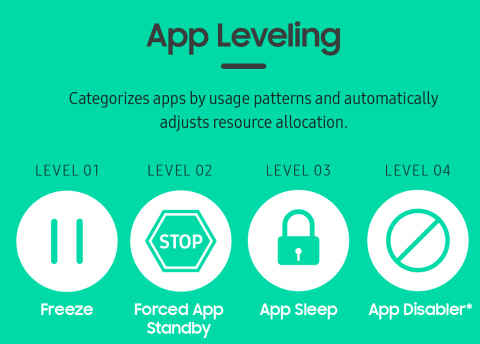Samsung Galaxy S10 performance enhancing features explained
Samsung says that the Galaxy S10 comes with certain AI-powered features that analyse a user’s phone usage pattern to save battery and shut less used/ unused apps to improve performance.

Highlights:
 Survey
Survey- Samsung explains battery saving and performance improving features of Galaxy S10 in a blog.
- The optimisations include longer battery life and faster app launches.
- App Pre-loading and vRamDisk work together to improve app response.
Artificial Intelligence (AI) is the new buzzword in the technology space, and OEMs are now using this tech to not only cut down manual labour, but also to enhance the overall experience of smartphones and services on them. Google is seen as a leader that is directly (or indirectly) trickling down the advantages of AI to consumers. While, some are resorting to introducing dedicated hardware to carry out smooth sailing of services, some are knitting AI-powered optimisations in the OS on the phones. Samsung is one such company that has come up with AI-based innovation and it has now explained how and where its latest flagship device the Galaxy S10 takes advantage of AI technology.
In a note, the South Korean giant has detailed how the AI plays a significant role in optimising software and improving the way users can interact with their devices. “The Galaxy S10 marries best-in-class hardware with machine learning and AI-powered performance management software that optimises the battery, CPU, RAM, and even the temperature of your phone, so you get the best performance without ever needing to fiddle with settings,” the company said. The optimisations include longer battery life, faster app launching and overall improved performance.
Battery optimisations: Apart from the massive battery – 3400mAh in Galaxy S10 and 4100mAh in Galaxy S10+ (Review) – that gives a longer running time, the flagship’s Fast Wireless Charging 2.0 can charge the device up to 36 percent faster than the previous generation of phones. But including a bigger battery is not always the solution to make sure a phone lasts all day, Samsung says, adding that “optimizing how the power it provides is used” is the way to get maximum out of a battery. To boost power efficiency, Samsung introduced a suite of intelligent performance tools to the Galaxy S10 “that work together to give you a seamless experience and a battery that lasts all day”.
“Samsung's intelligent battery management system works with Google Adaptive Battery to analyse your app usage and optimise your CPU and memory to improve performance and save battery power for both the apps that you use the most, and those you never use. It is powered by two main features: App Leveling and Adaptive Power Saving,” the company said.
The App Leveling feature categorises apps by usage patterns and automatically adjusts resource allocation. If an app is open, the one running in the background will freeze, or will be forced to standby. If the standby is longer than expected (thanks to AI), it will be put to sleep. After approximately 30 days, the app will be disabled if it hasn’t been used , that is, it will no longer run until you open it again. “A lot of apps that people install never end up getting used but they still take up precious resources. Powered by intelligence the Galaxy S10 automatically analyses these apps and disables them so they only use resources at a NAND level, ensuring your RAM, CPU, and battery are saved for more important tasks,” Samsung explained.
The Adaptive Power Saving feature quitely analyses a person’s phone usage pattern and routine to optimise battery performance. For example, in a normal routine, a person is left with 35 percent battery at the end of the day. Sometimes it happens that a person uses the phone for something which is not in the daily routine, say, video conference, the Adaptive Power Saving comes into play to save maximum amount of battery by the end of the day.
The analysis of a user’s phone usage is done by App Pre-loading and vRamDisk, which work together to ready resources in advance to improve app response. App Pre-loading learns a user’s app usage pattern and predicts what apps he/she will load next. For instance, if a user tends to open your messenger app after using the camera app, then the messenger app will be pre-loaded when the camera app is opened. The vRamDisk works in conjunction with App Pre-loading by reading and bringing the resources needed for app launching onto RAM. “It also allows frequently used apps to be accessed more quickly by learning on which page the app is on the screen launcher, so the resources can be pre-loaded for that specific page,” Samsung said.
Related Read:
Samsung Galaxy S10 5G to launch on April 5: Report
Digit NewsDesk
Digit News Desk writes news stories across a range of topics. Getting you news updates on the latest in the world of tech. View Full Profile

